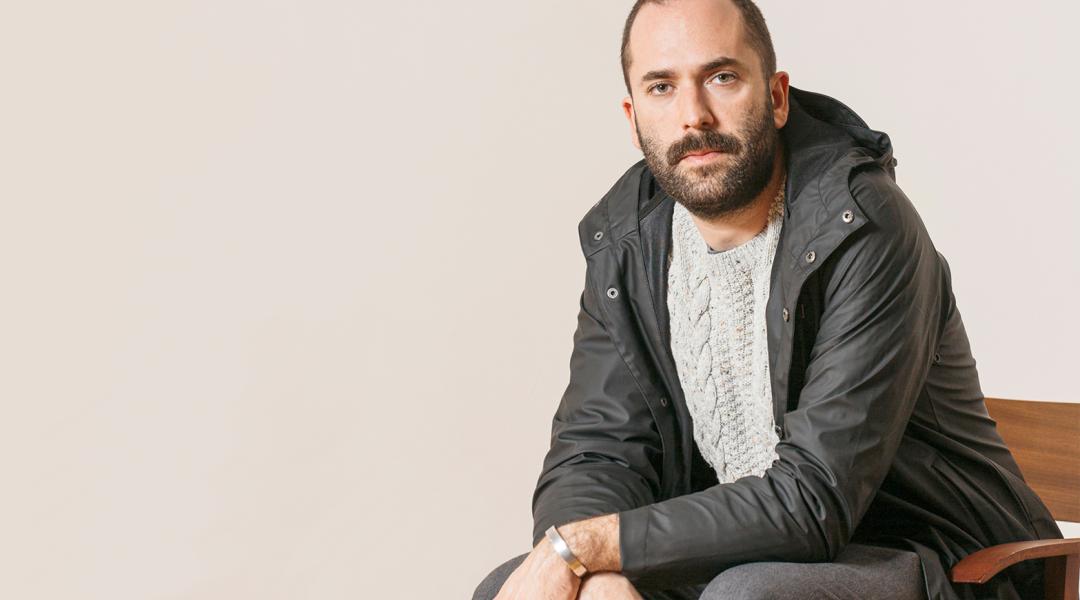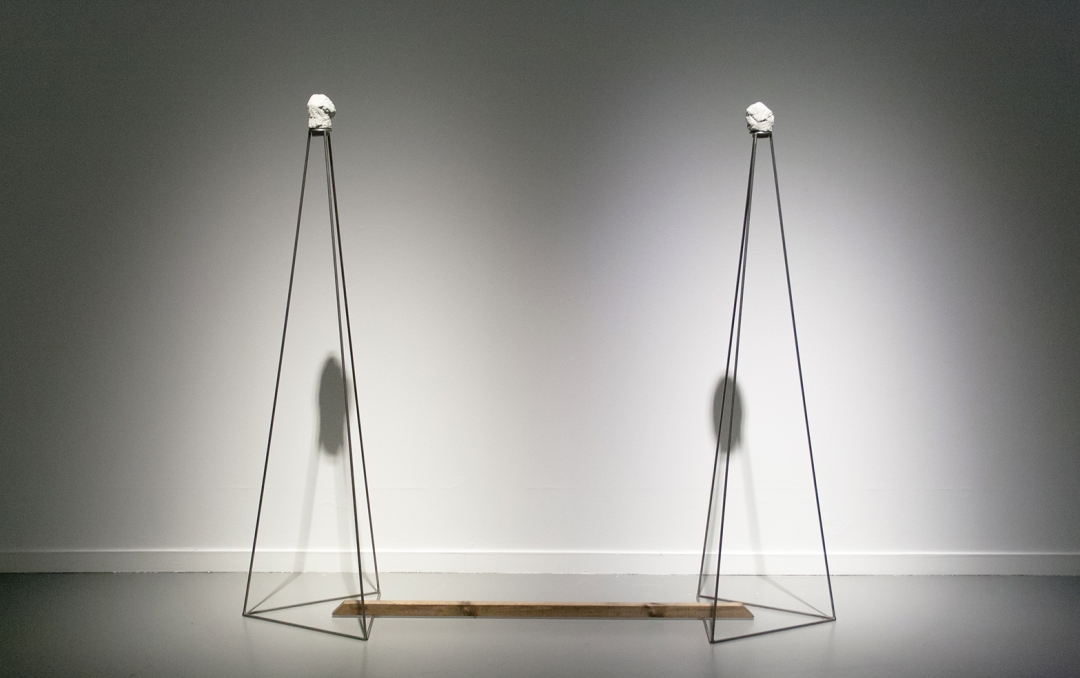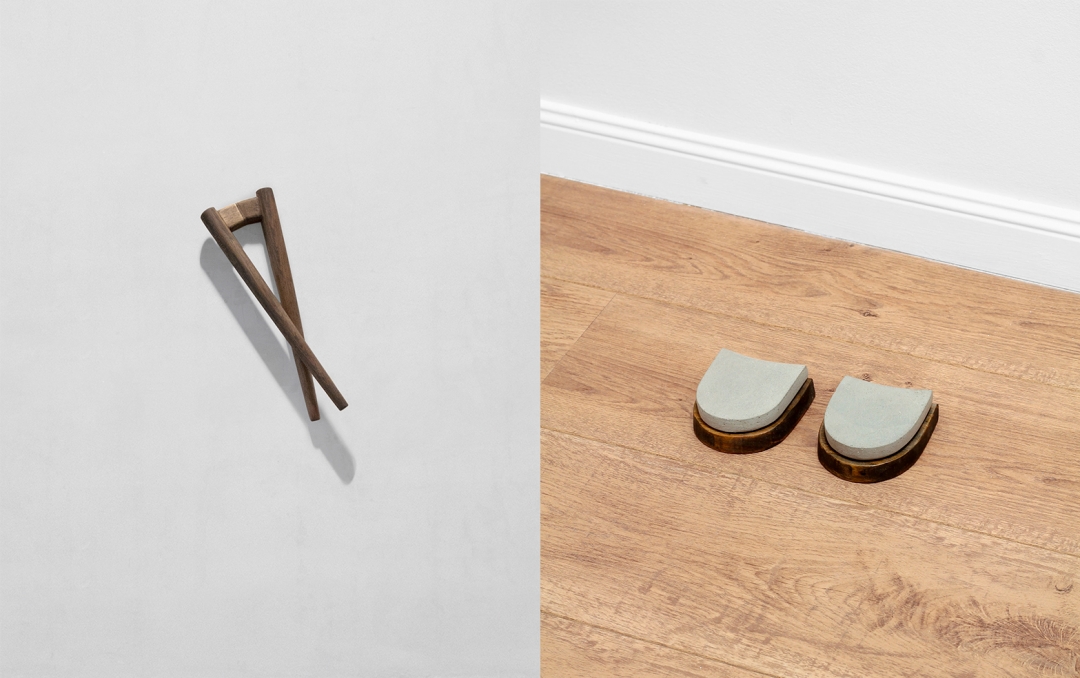Christian G. Bello
Poetics of Matter

He’s one of the most recognised Spanish artists within young contemporary plastic creation and one of the five finalists of the IV Premio Cervezas Alhambra de Arte Emergente [4th Emerging Art Alhambra Beer Awards]. These days, Galician Christian García Bello will spend his fifth consecutive year at ARCOmadrid with several proposals which are the result of his research as a sculptor.
He’s been forging his work for years, which explores the possibilities of space through endless techniques, materials and dimensions, approaching traditional architectural shapes from an analytical and contemporary perspective. Christian García Bello (La Coruña, 1986) creates geometric shapes that illuminate the shadows between strict intellectual perception and dazzling material representation converted into art. He always applies the same introspective and methodical strategy to his work, which begins with the direct experience of the area and is encapsulated in a poetic tale through sculpture and work on paper.
After living for the last few years in Vigo, Ourense and Brussels, García Bello will settle in La Coruña until the middle of the year, since, as well as his presence at ARCOmadrid 2020, in April he will open his next individual exhibition at Fundación DIDAC in Santiago de Compostela.
Which are the core concepts of your work as a sculptor and painter? Where do you feel greater satisfaction?
Firstly, I don’t consider myself a painter because the approaches I make in my work on paper are generally not those of a painter. I’m a sculptor that works in two and three dimensions. In both cases I prioritise the radicalness of compositive asceticism and the material’s poetic value.

‘El duelo’, by Christian G. Bello. © Courtesy by Christian G. Bello
You started in the audiovisual and illustration world. What brought you to sculpture?
I guess my own ideas matured. My field of problems was approaching spatial materiality, so my approach to sculpture was influenced by a gradual need for physical precision and rotundity.
My work develops materials with a poetic value or a link to the area that is the subject of my research at the time. For this reason, a large part of my work is developed through wood, concrete, graphite, plaster, wax or steel, which doesn’t mean that this list won’t continue to grow in the future.
Which projects have you brought to ARCOmadrid and where can we see them?
This year, on the one hand, I’m presenting my project for the Award, and on the other, a series of pieces around the unknown shapes of Galicia, which can be seen at the FORMATOCOMODO (Madrid) gallery stand. Specifically, this is a series of pieces on paper that reconsider the sgrafittos of Ribeira Sacra, a sculpture that pays tribute to a popular Galician game that is disappearing called ‘chave’.
Which is the origin of these pieces?
In June 1965, from his home in Buenos Aires, Luis Seoane wrote a letter to his friend and partner Isaac Díaz Pardo where he explained that “there are unknown Galician shapes that are in the landscape” and that “they’re there for whoever knows how to collect them”. This work is a veiled homage to the Key Game (Xogo da Chave, in galego); a popular game in Galicia that consists of throwing a set of metal weights from a distance of 14.20 metres against a tongue-shaped totem. Despite the game slowly disappearing, the characteristic metallic sound of the Chave has become part of the sound landscape and an intangible heritage of Galicia that is quickly dissipating.

‘Vacante Asceta I’, by Christian G. Bello. © Courtesy by Christian G. Bello
What does being selected for the Premio Cervezas Alhambra de Arte Emergente mean to you?
It’s very motivating to be able to perpetuate an award that many noteworthy Spanish artists whom I follow and admire have won. The contest has two main points that define it: looking for inspiration in Granada and the Alhambra and collaborating with an artisan within Spain. Facing this project was close to my field of problems and, therefore, very appealing.
The project you’re presenting as part of the contest is called Almuqárbas. Tell us about that.
Through Almuqárbas I suggest a contemporary rethinking of Mocárabe, an ornamental design typical of Islamic architecture. For this, I’ve developed a new module based on the poetic significance of the architectural geometry of the Alhambra’s Sala de las dos Hermanas (Hall of the two Sisters). The musicality of the final composition reminds you of a star constellation which is petrified in the porcelain on the walls, dissolving the limits between the earth and the divine, like the palace’s domes. It’s as if nature and artifice worked hand-in-hand on an exercise of intuition, synthesis and representation of the symbolism in the garden of the Seven Heavens in the Quran, metaphorically interpreted through fragment and variation.
What has your collaboration with ceramicist Verónica Moar for this project been like?
I was looking for a ceramicist that shared my love for precision, self-discipline and enjoying the material’s poetics, and Verónica Moar achieves all of this through an extensive knowledge of the languages and plastic possibilities of ceramics.
Do you defend the connection between art and craft?
Absolutely. In my specific case, my project wouldn’t have been possible without this collaboration and it wouldn’t have matured in the same way if we hadn’t worked shoulder to shoulder all these months.
How have Galician idiosyncrasies influenced your career, specifically, aspects such as death or religiousness?
They’ve had a big influence. Both are connected to all my recent research regarding popular architecture and the unknown shapes of Galicia. In the end, it all responds to the intention of finding the best way to decrypt a past given by our context, to be able to narrate the present that we live in coherently, with a contemporary intention and a radical rejection of frivolousness.
Do you personally feel the competition there is within young art?
No, because art isn’t and has never been a zero-sum game. Neither is the art market, although some believe the opposite to be true. There’s no cake to compete for because we all make and bake the cake, so I think what’s important is to cooperate and seduce those that haven’t been seduced yet, more than competing against each other.
“Art isn’t and has never been a zero-sum game. What’s important is to cooperate more than compete”
Which artists do you share affinities with or receive influence from?
The list of creators that influence my work or catalyse it is long, quite frankly. It includes artists from my geographical surroundings or my generation such as Álvaro Negro, Fernando García, Jacobo Castellano, Miguel Marina or Tamara Feijoo, and fundamental leaders of contemporary sculpture such as Nacho Criado, Mark Manders, Thierry de Cordier or Miroslaw Balka. But I also always keep in mind architects such as Peter Zumthor, Luigi Moretti or Carlo Scarpa, musicians like Leyland Kirby, Daniel Lopatin or Julia Holter, and poets such as José Ángel Valente or Manuel Antonio.
What do you expect from this edition of the fair?
I hope my new work is seen as a coherent but also seductive step within the context of my own research.

‘Un pie sobre otro’ and ‘Los amantes mudos’, by Christian G. Bello © Courtesy by Christian G. Bello



